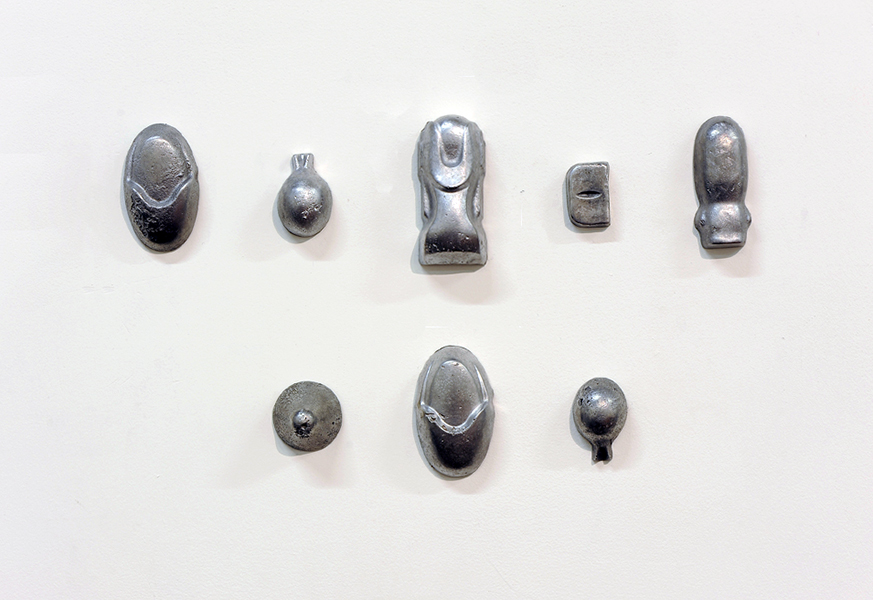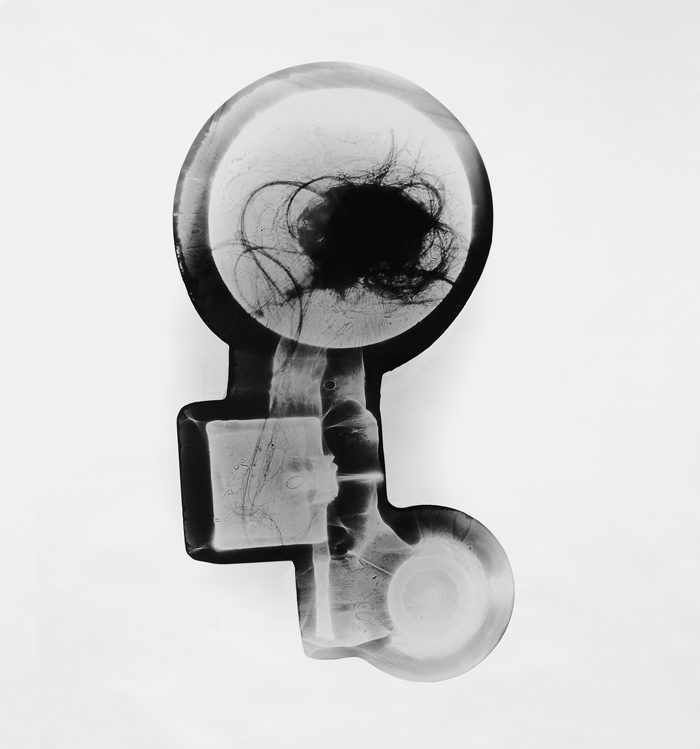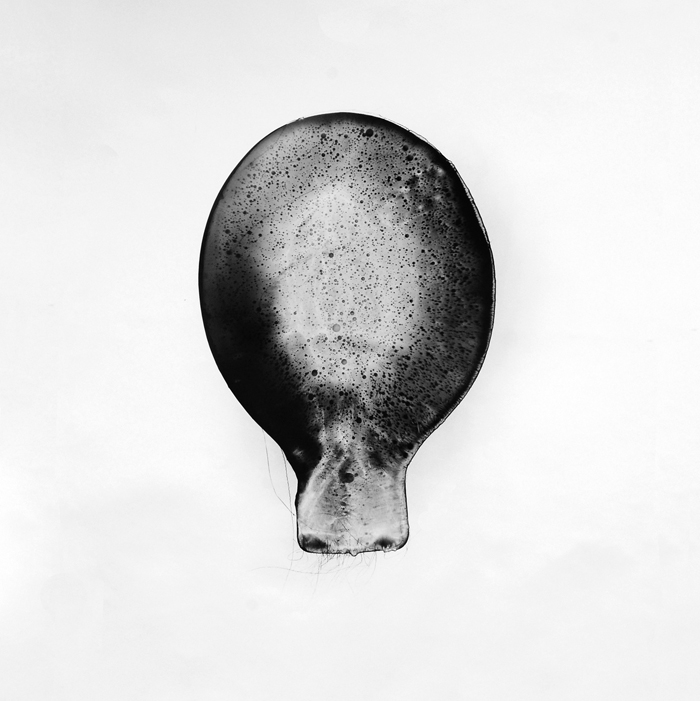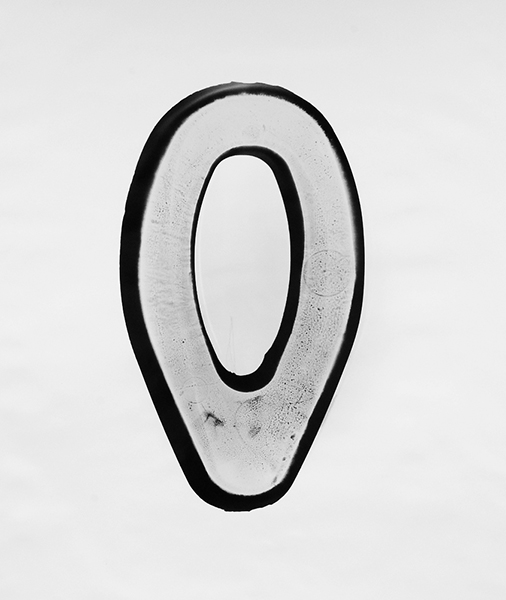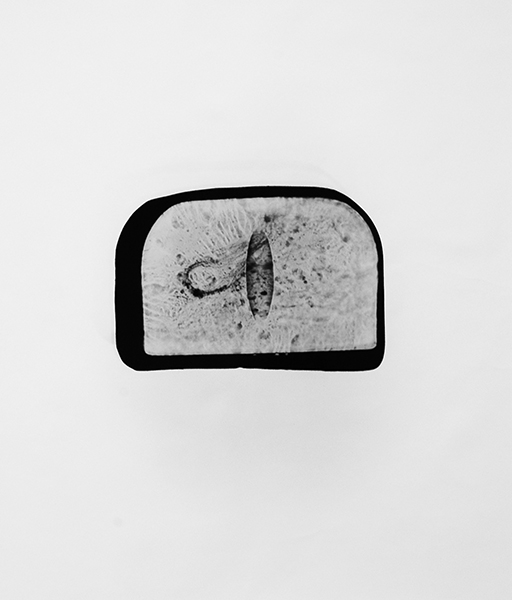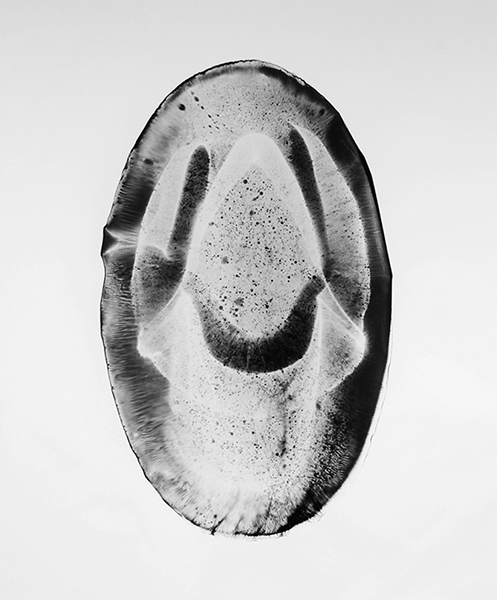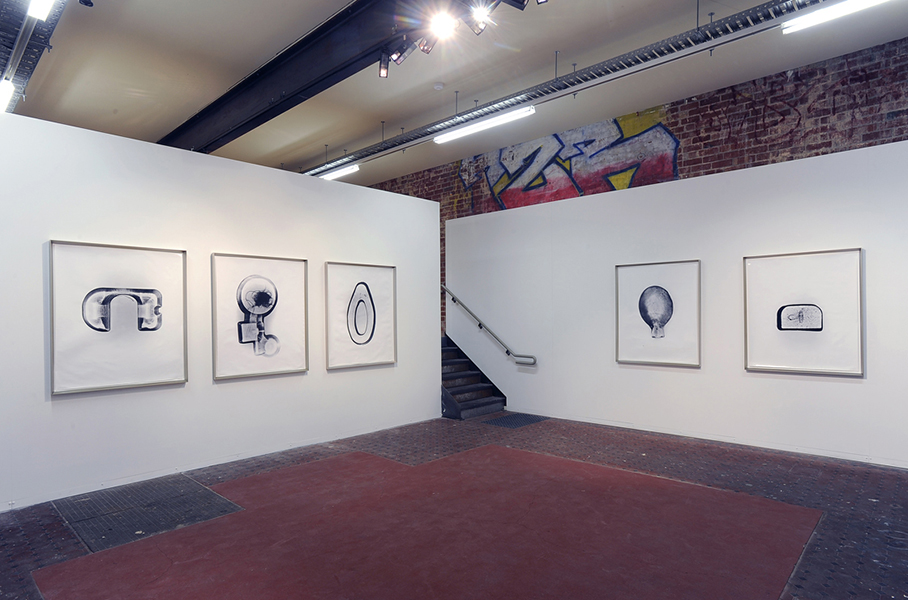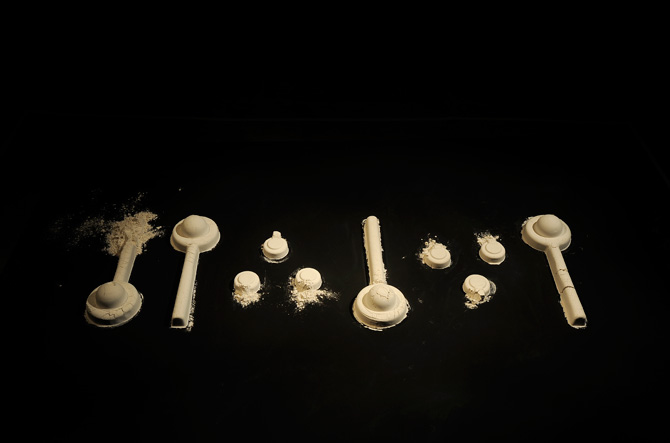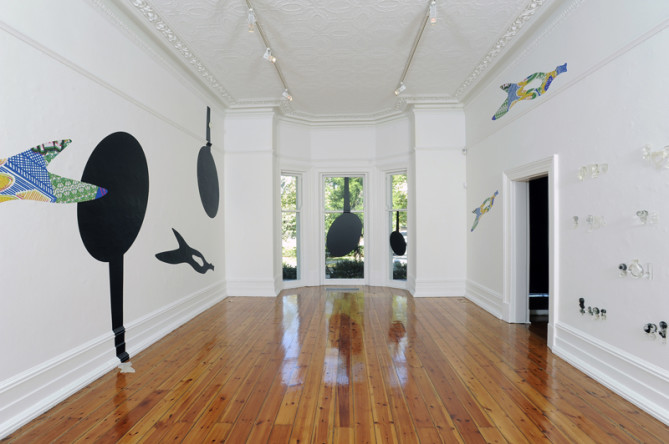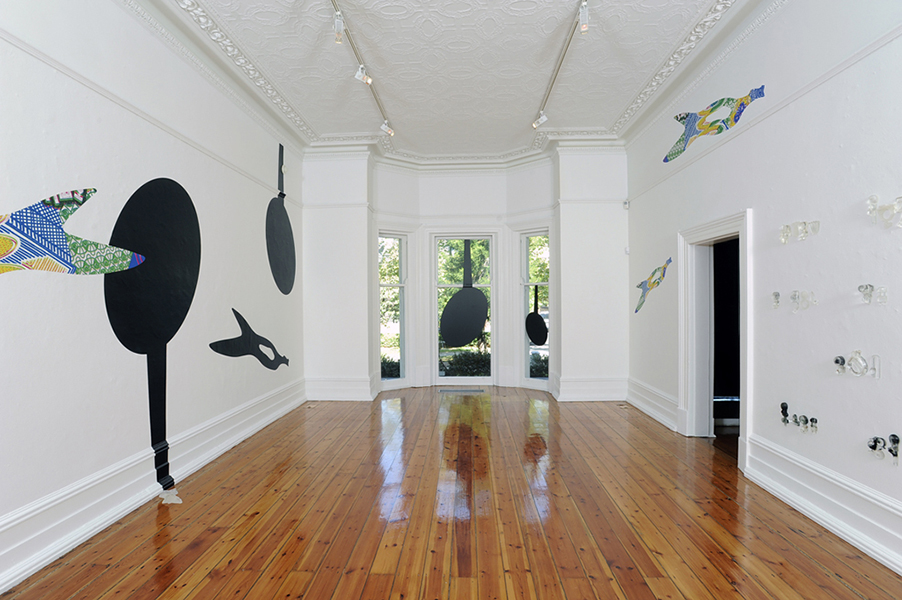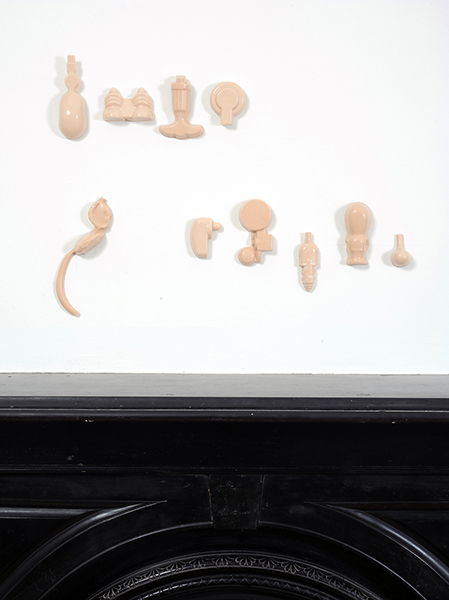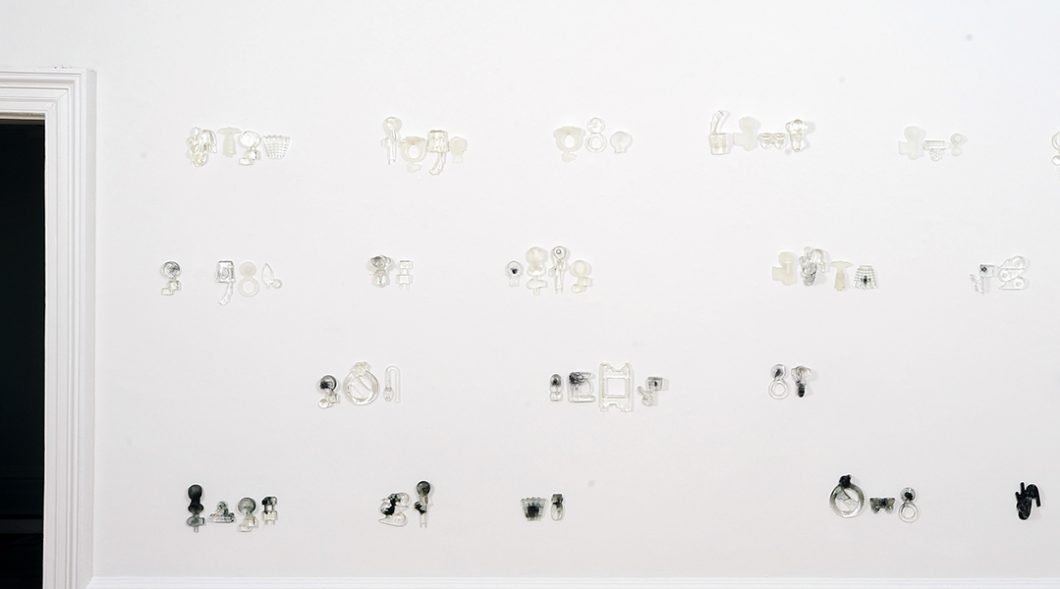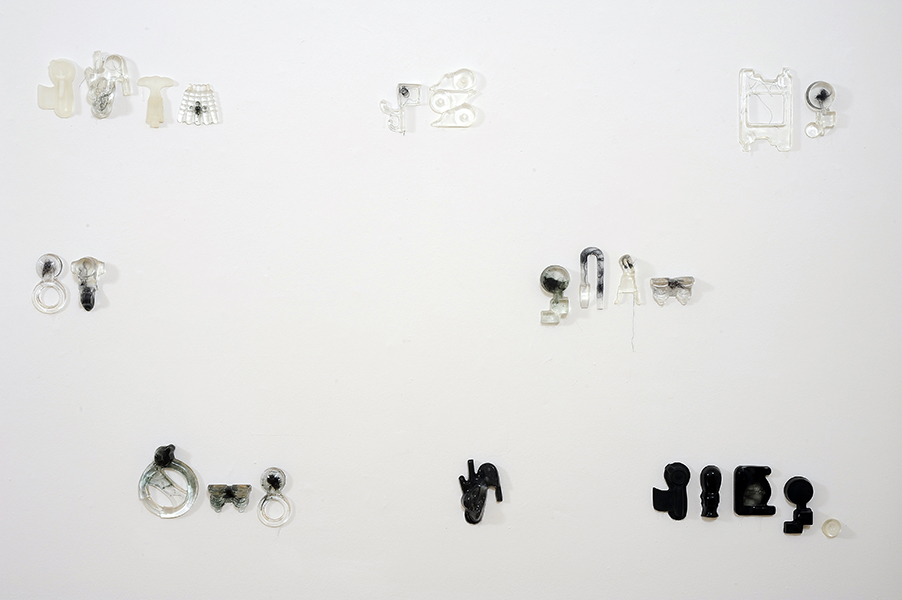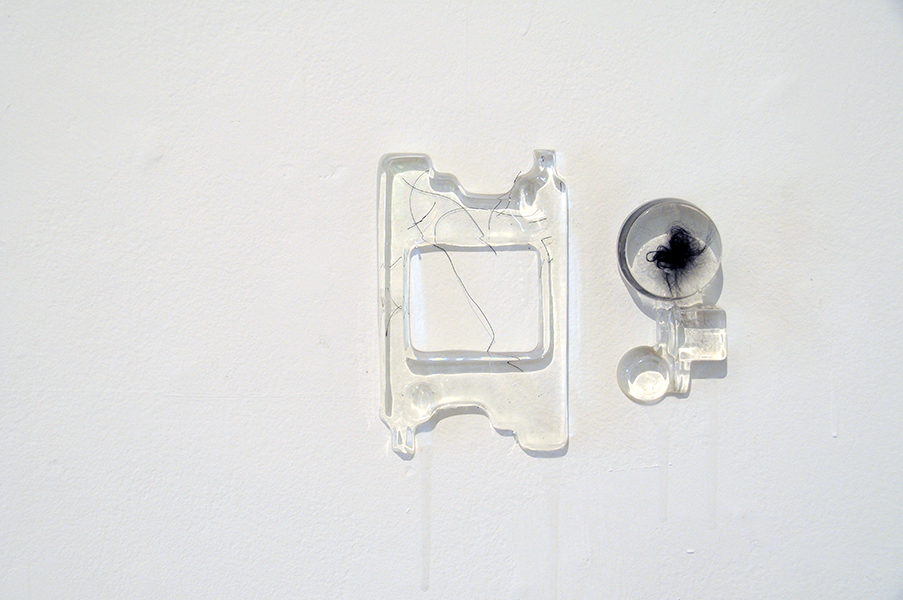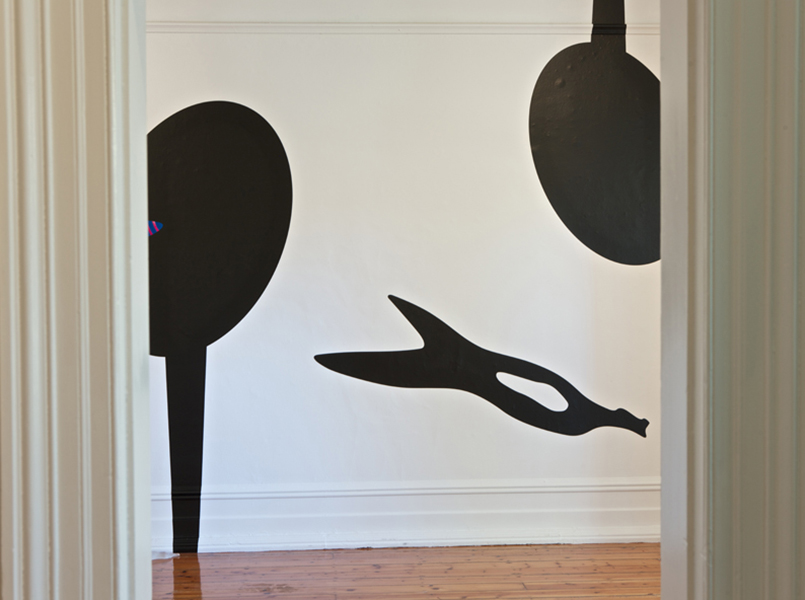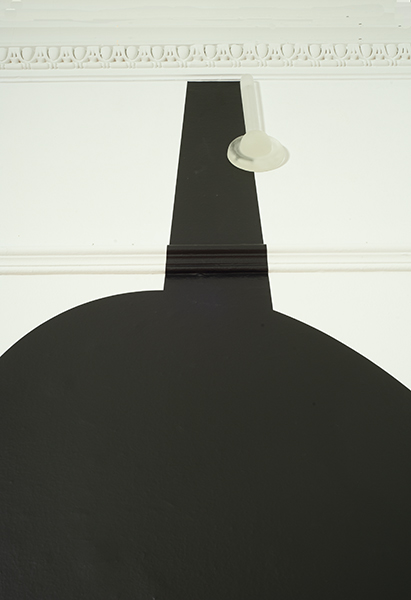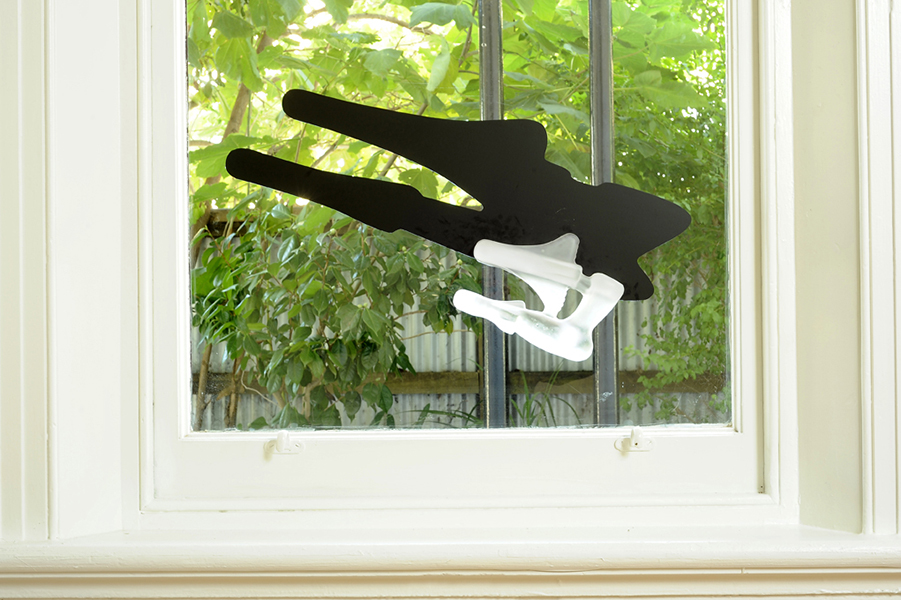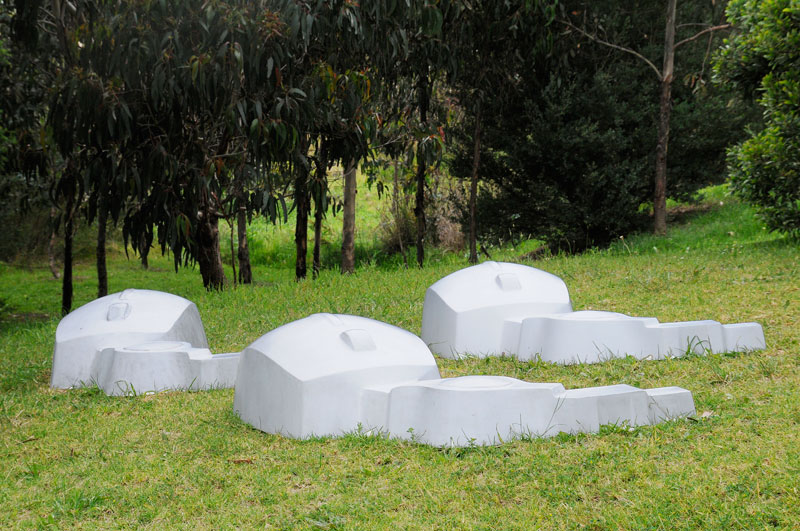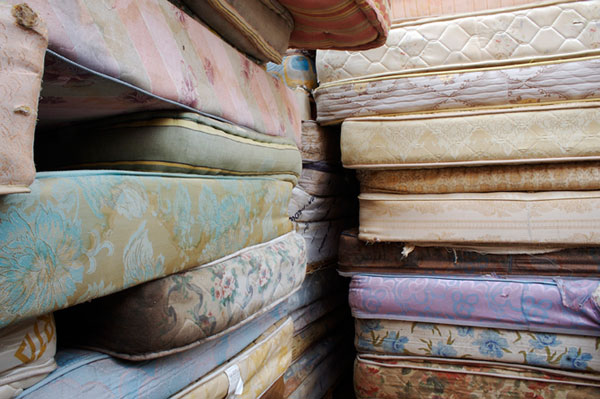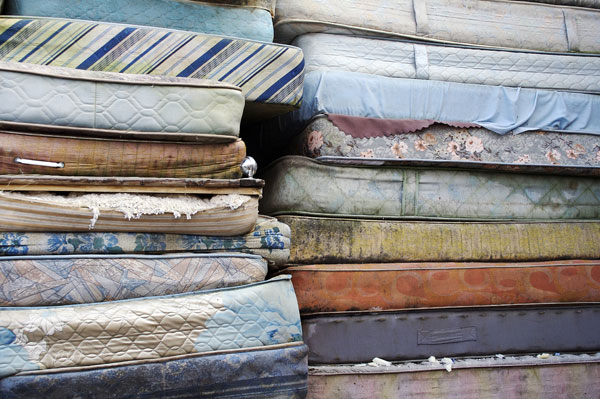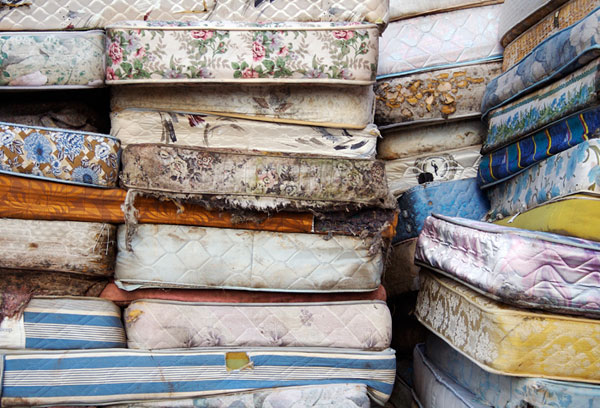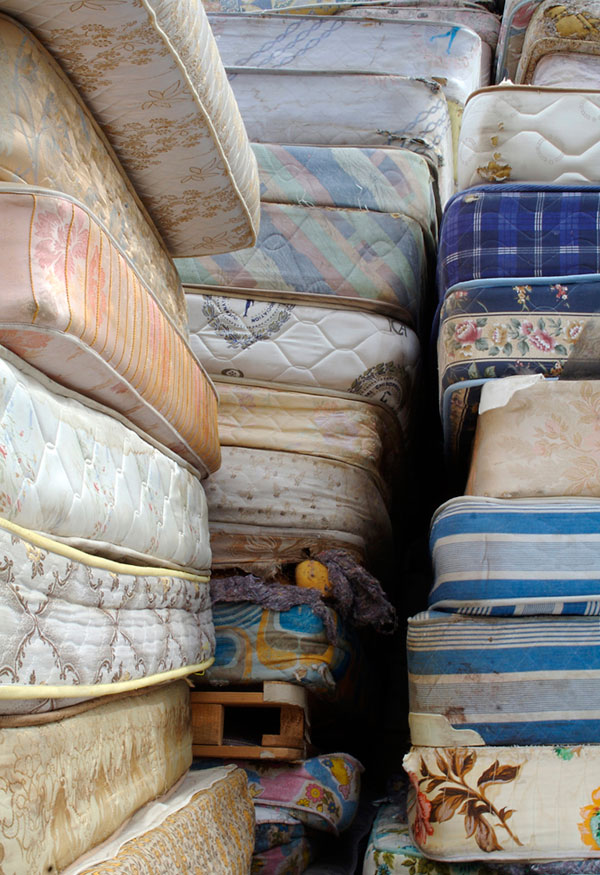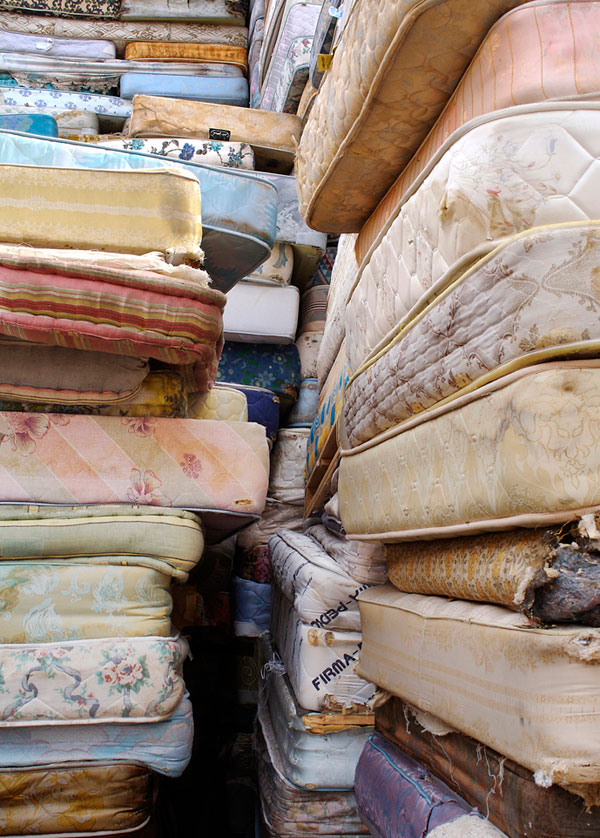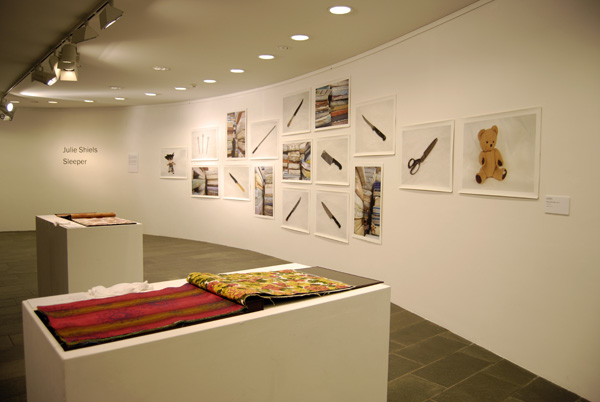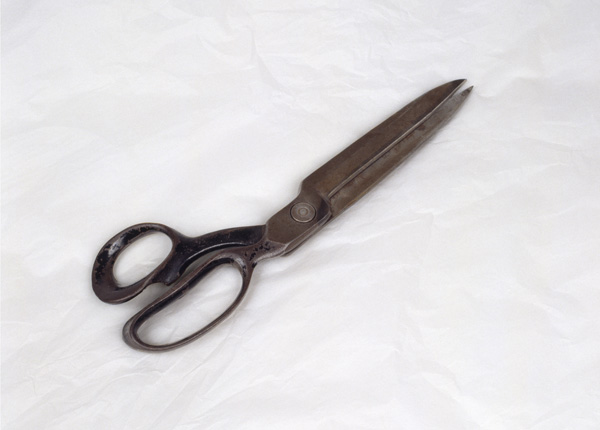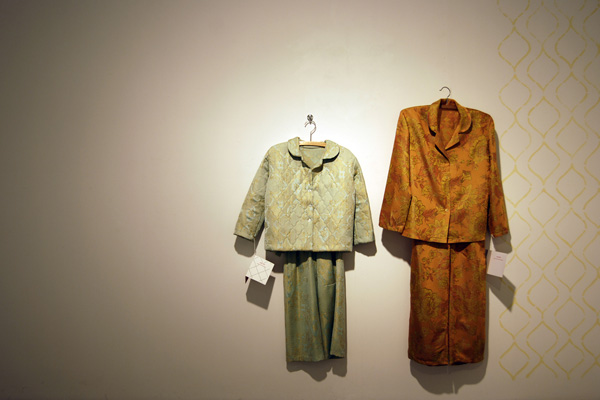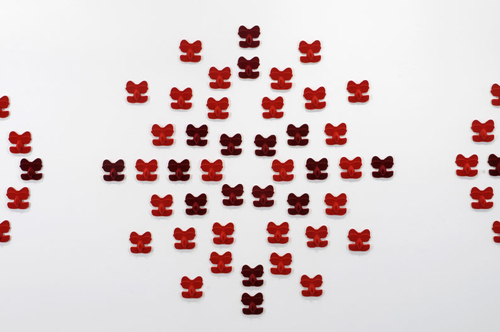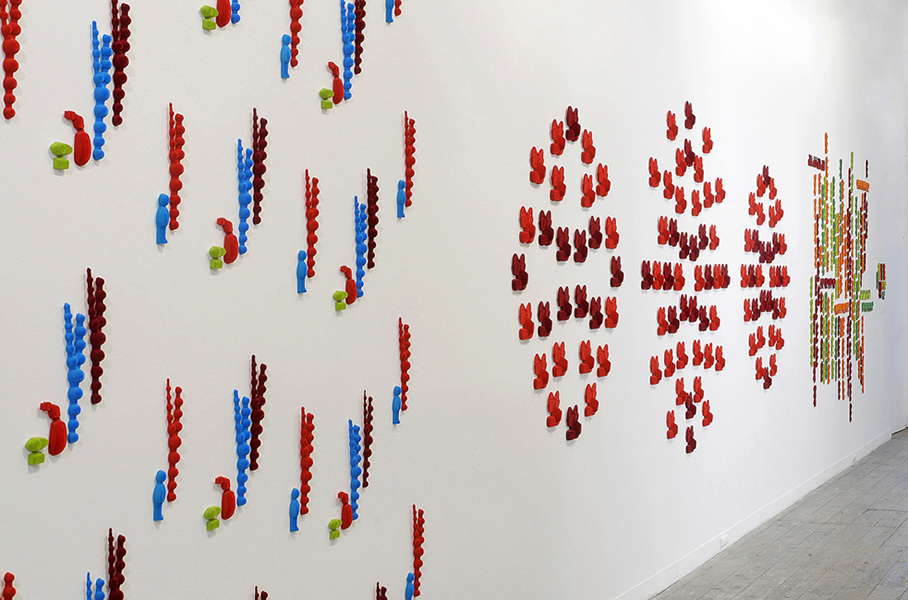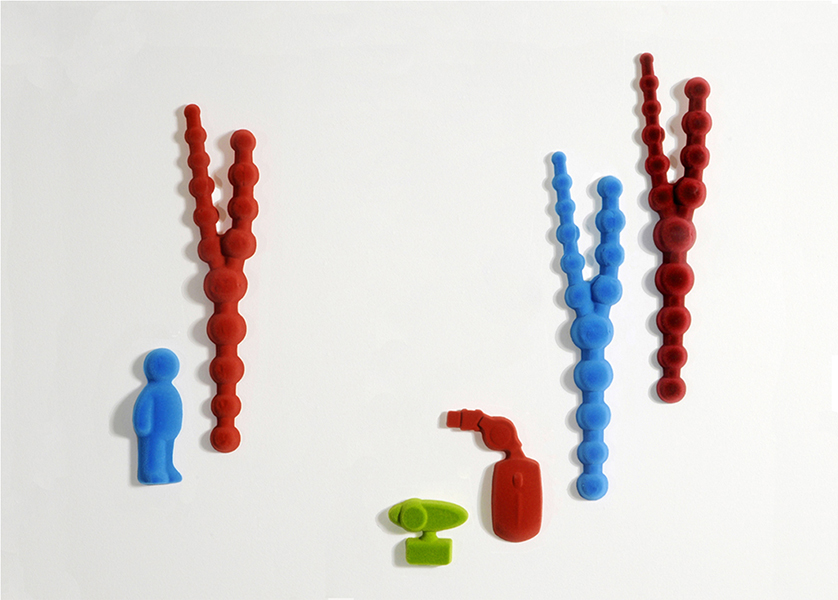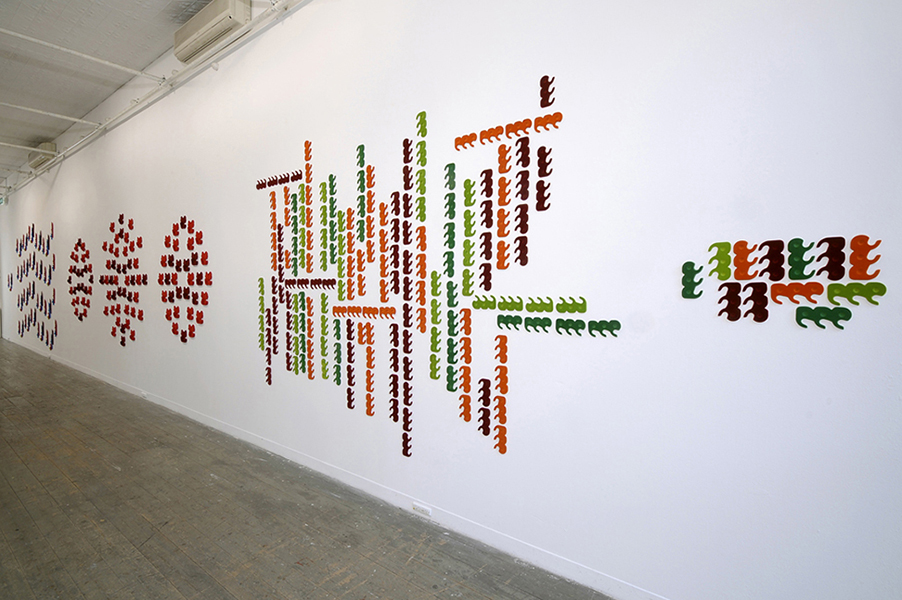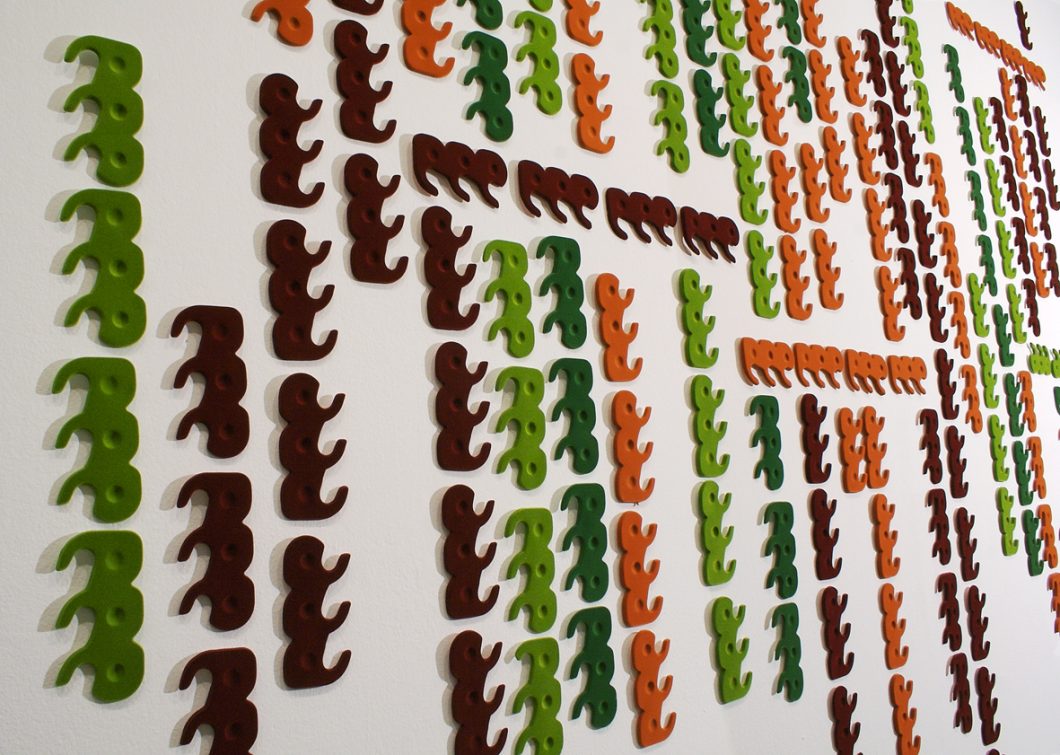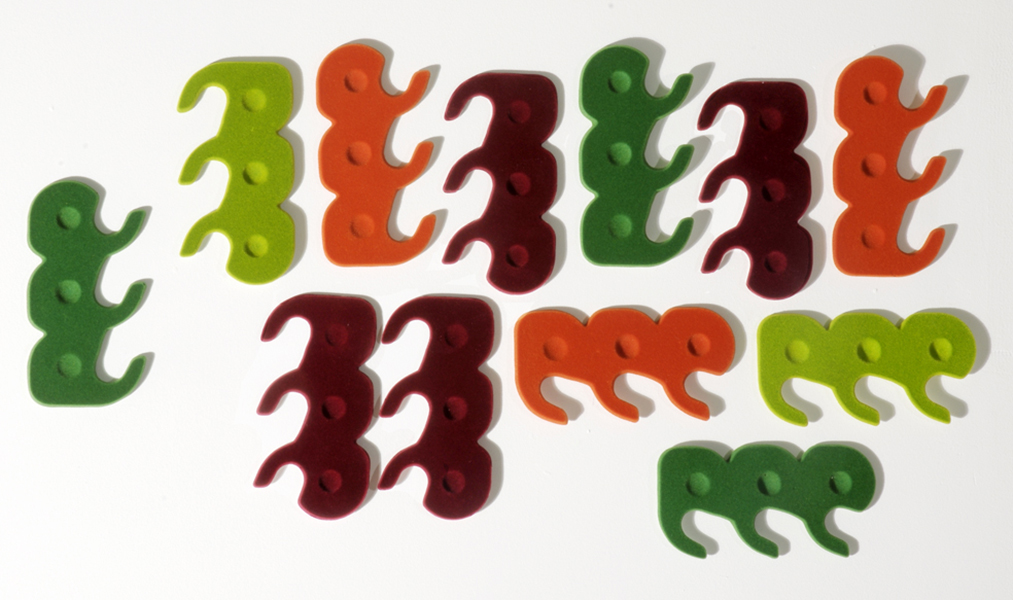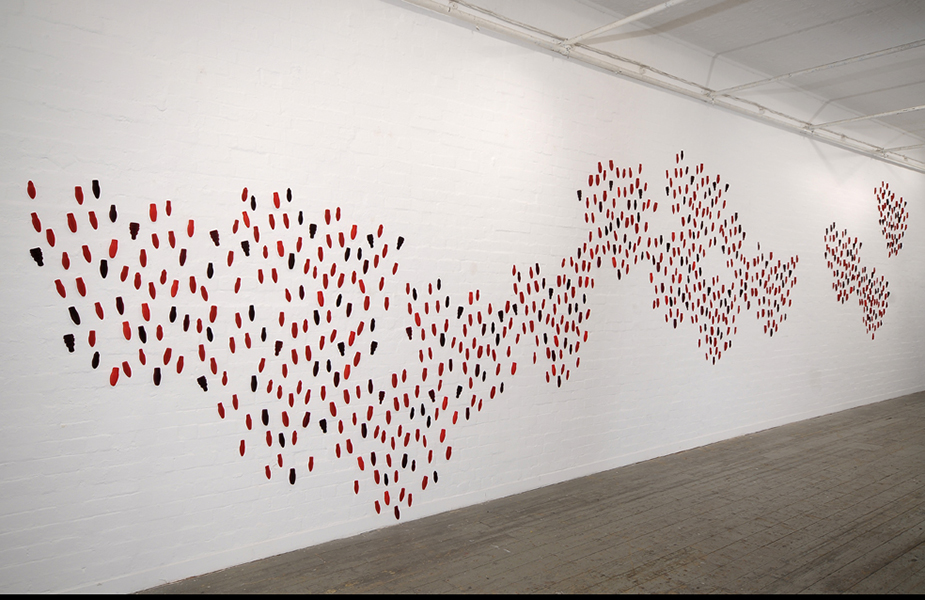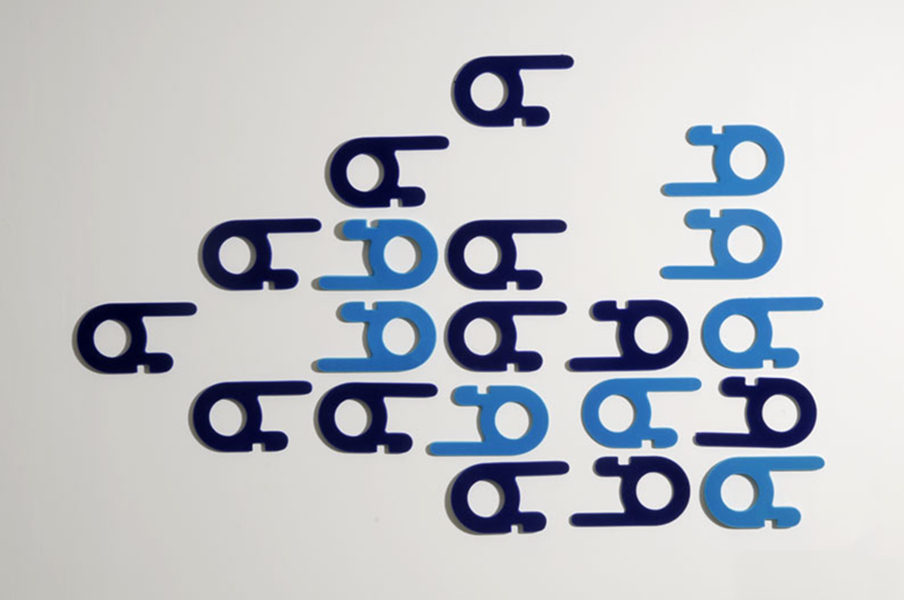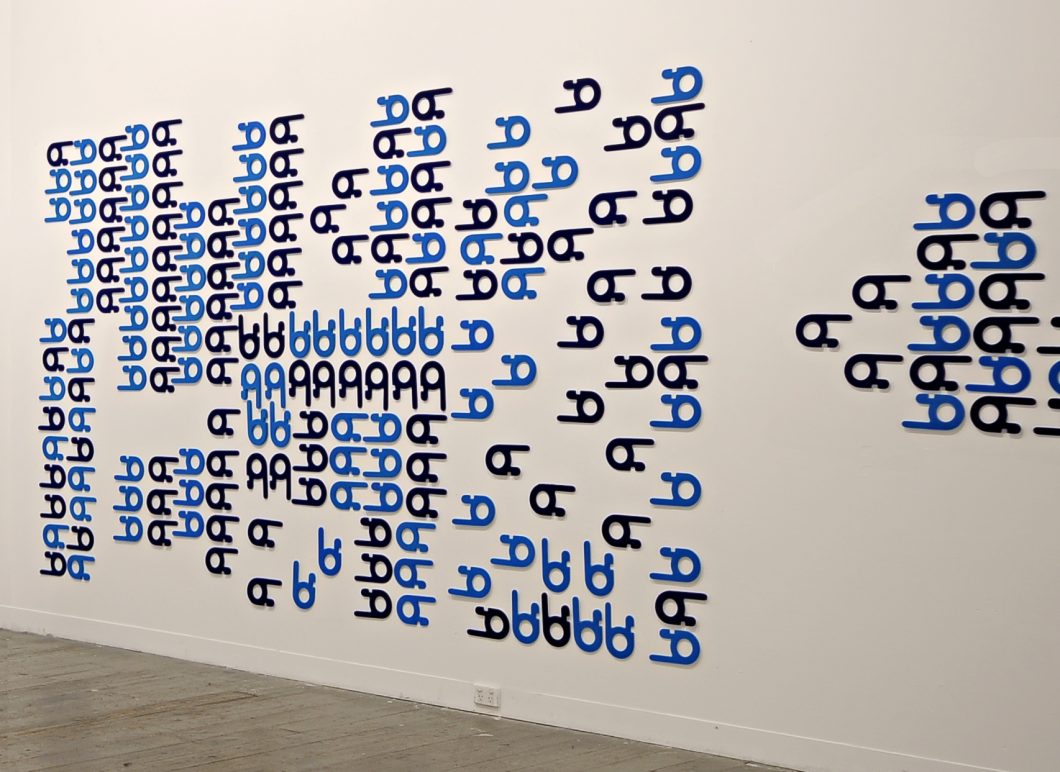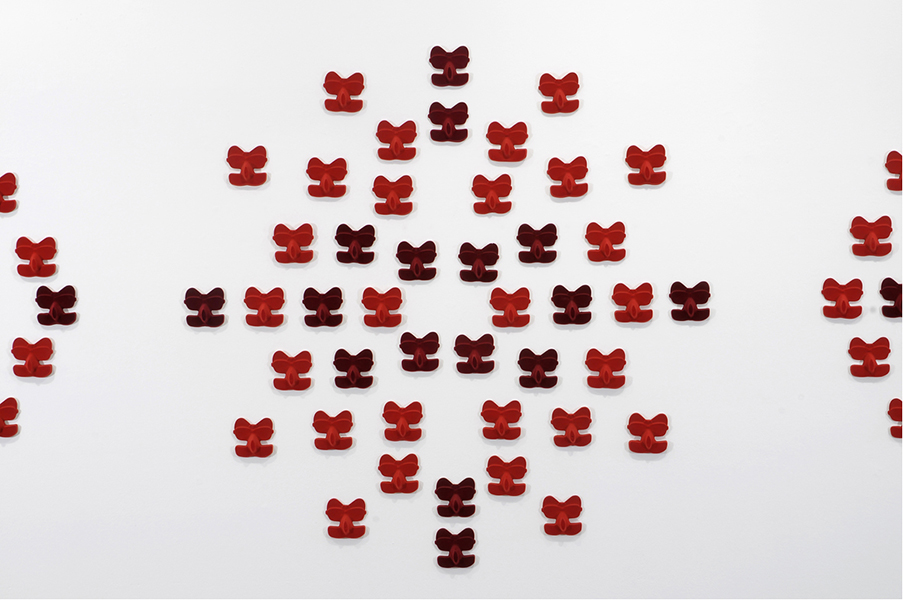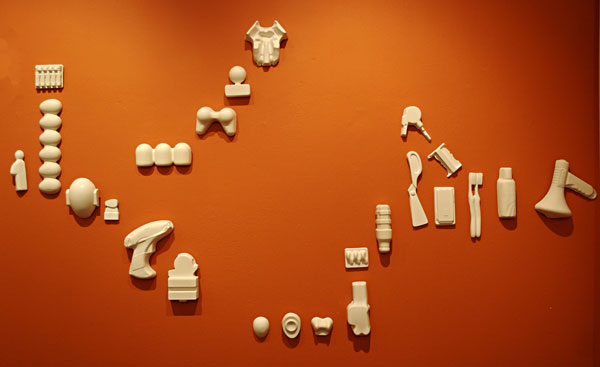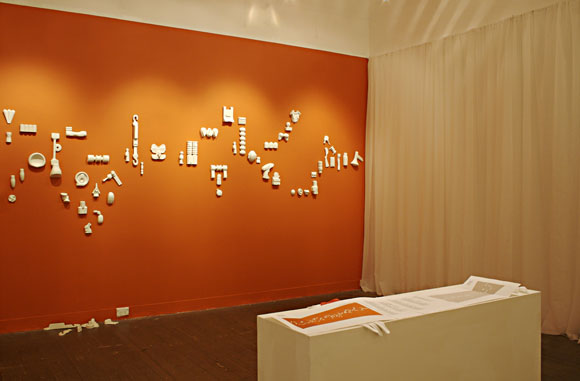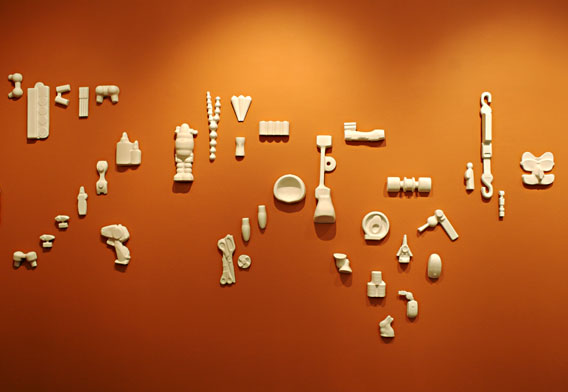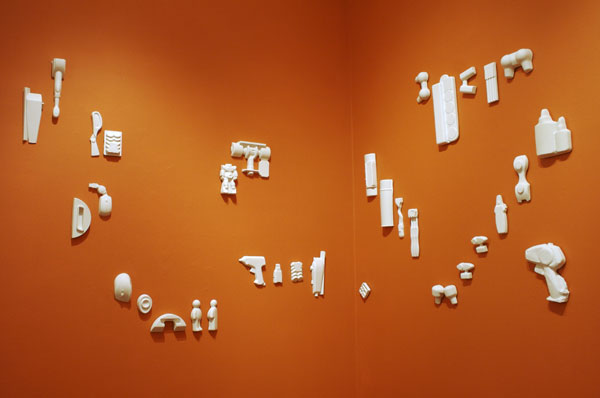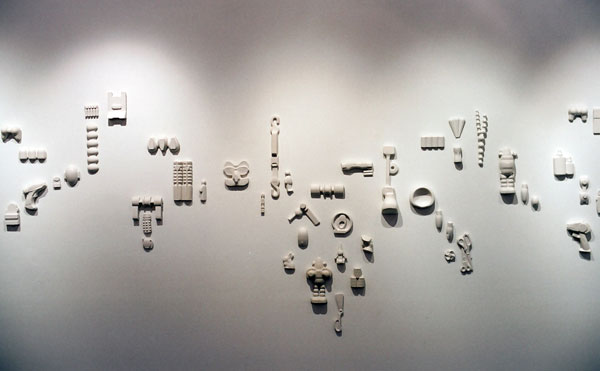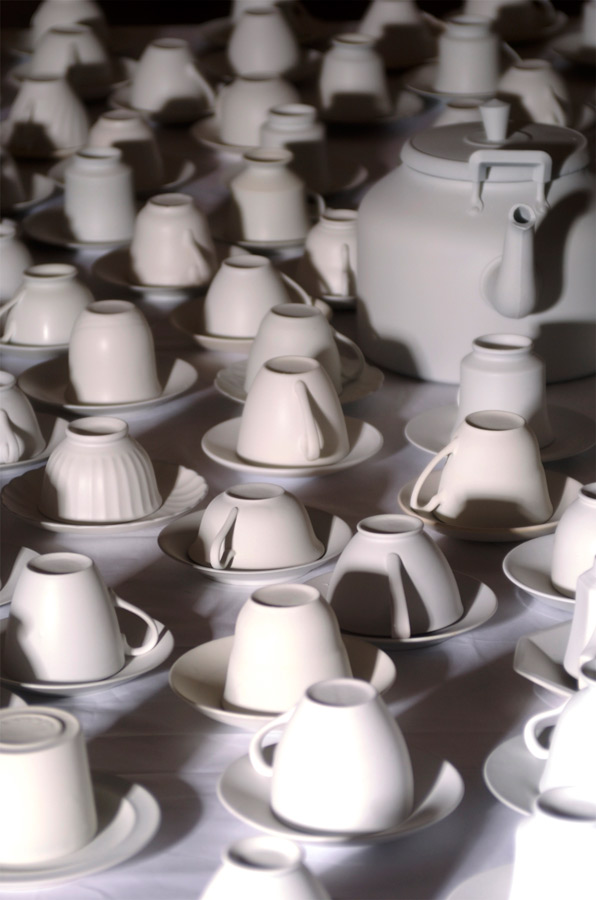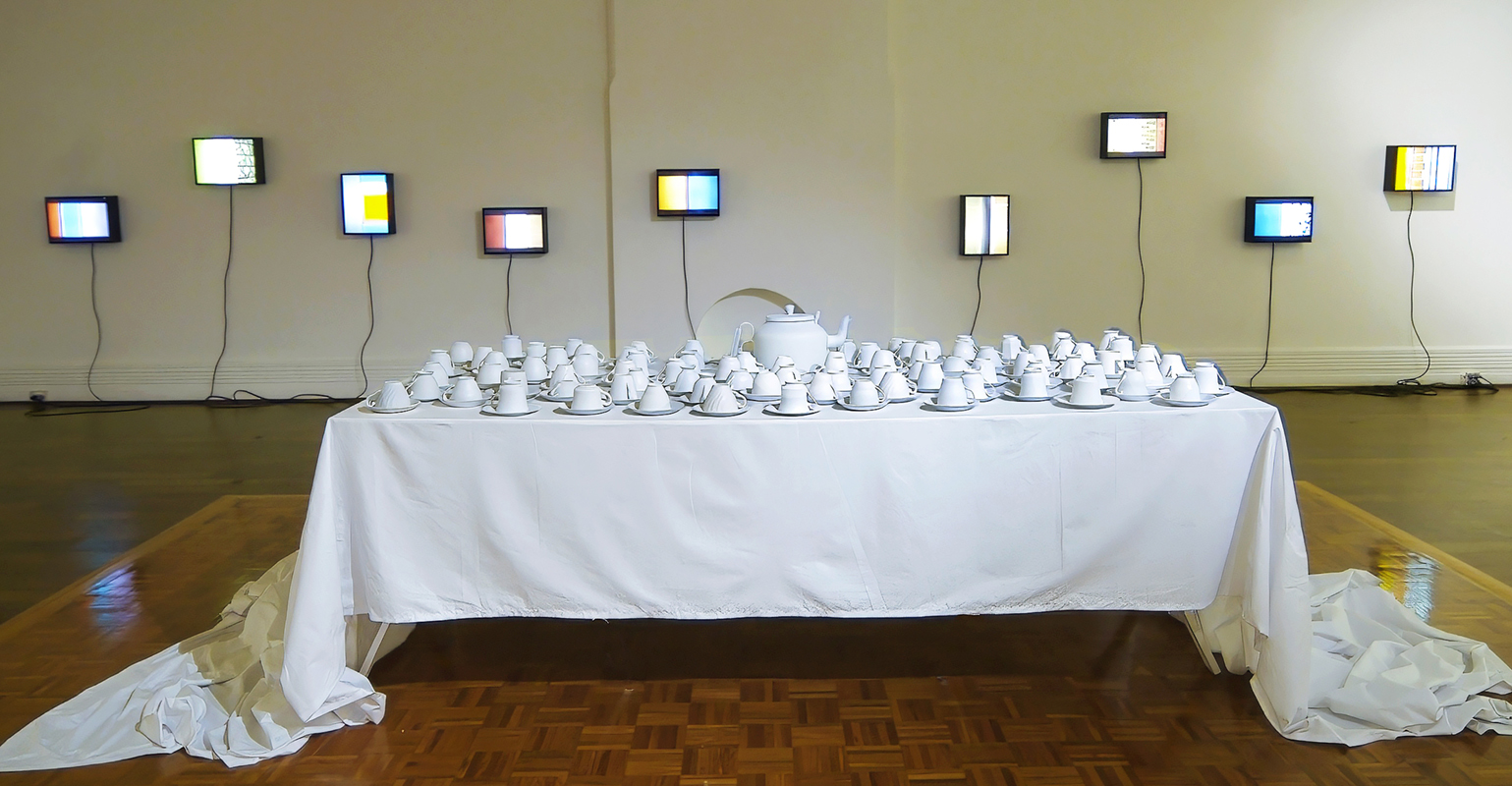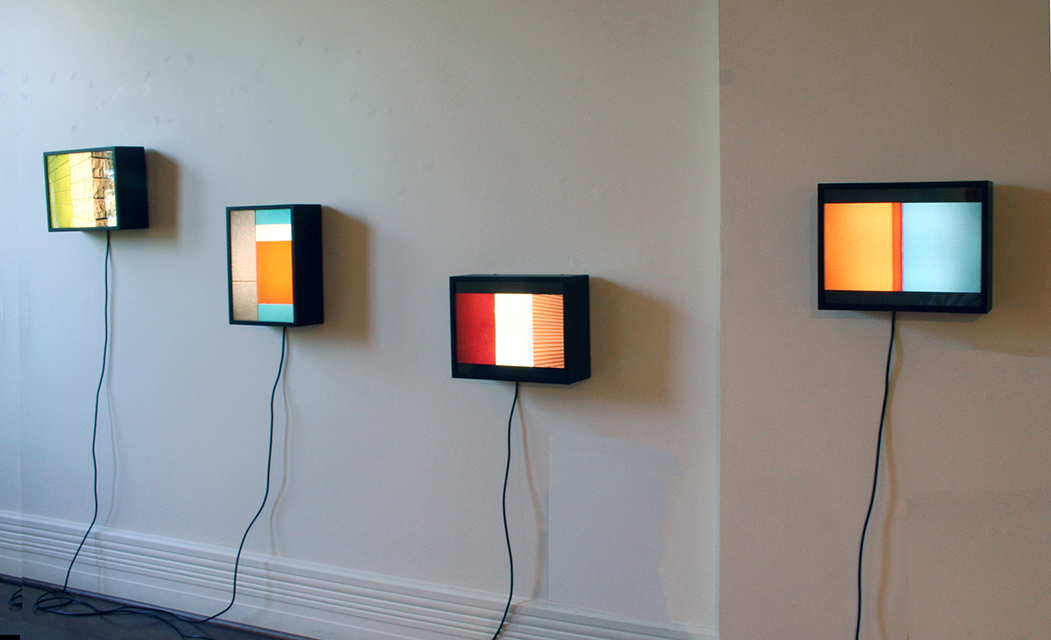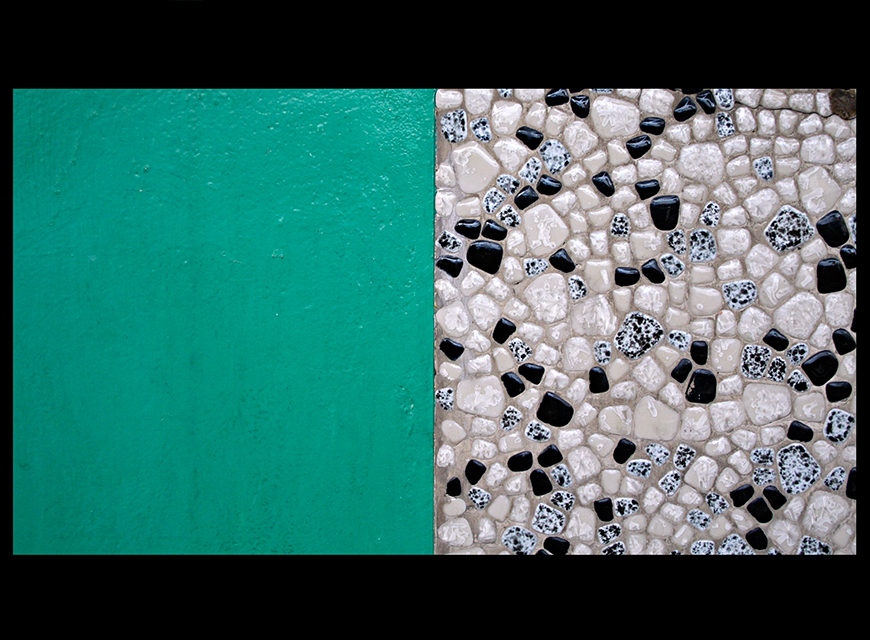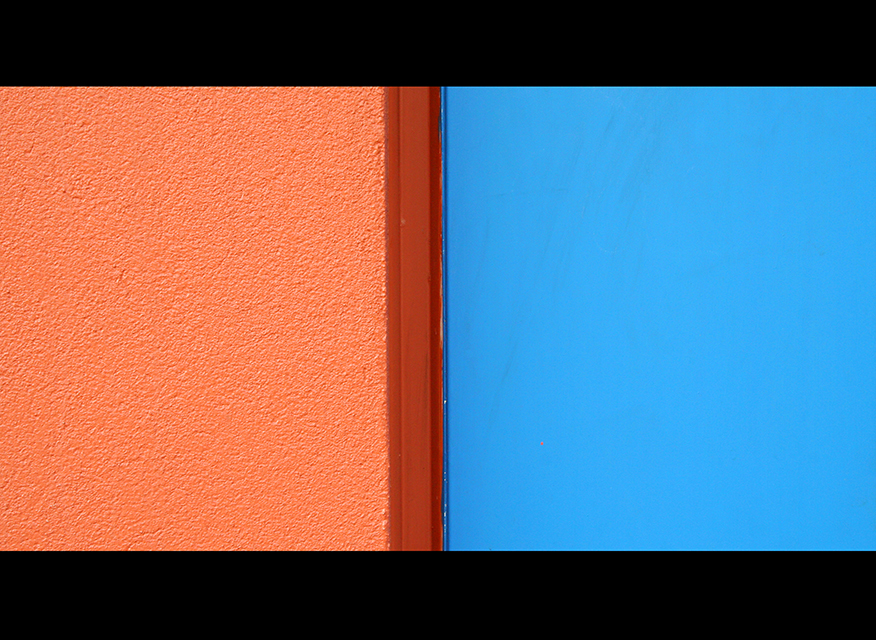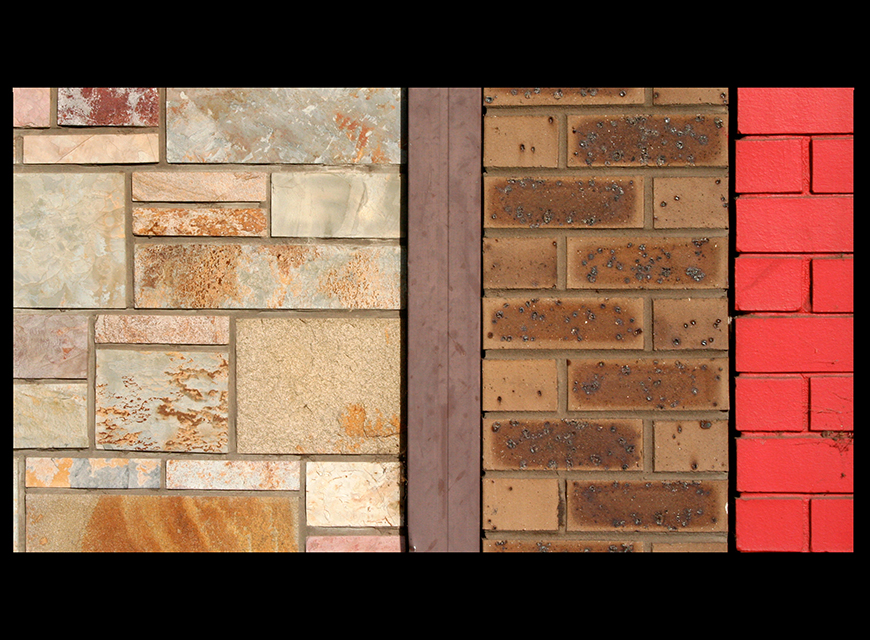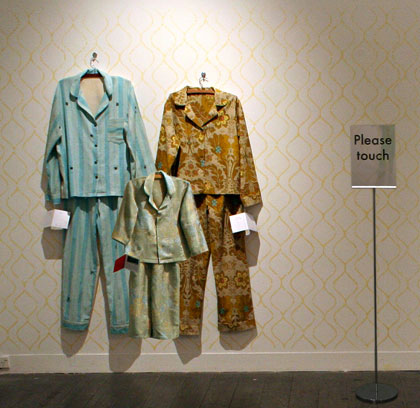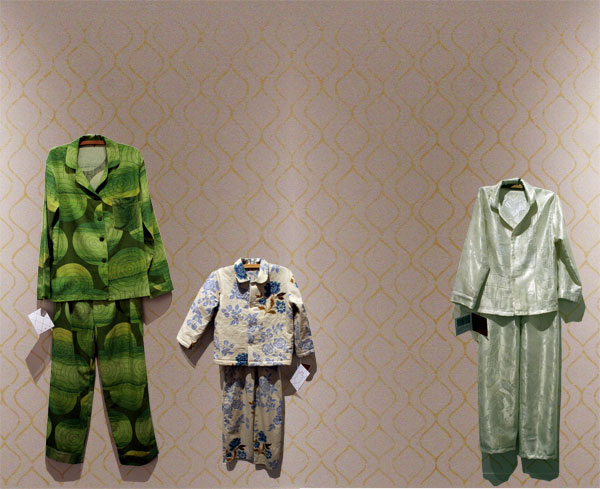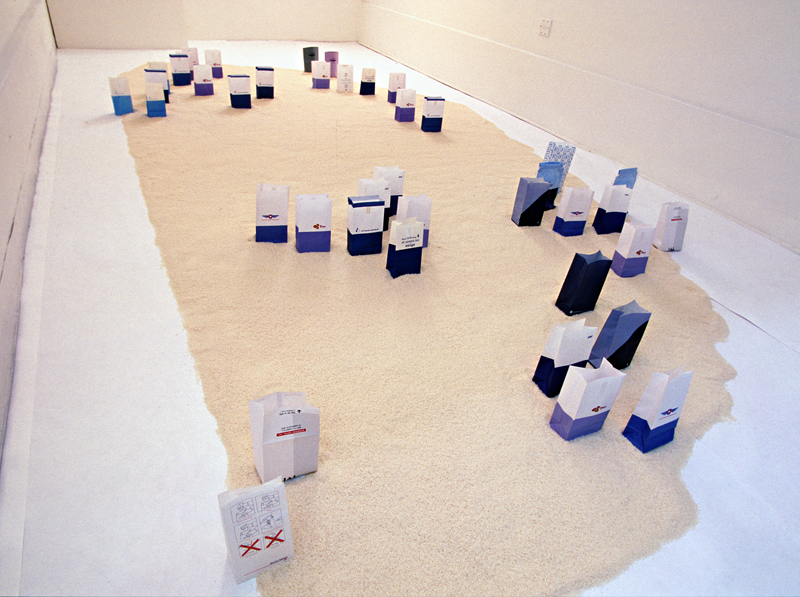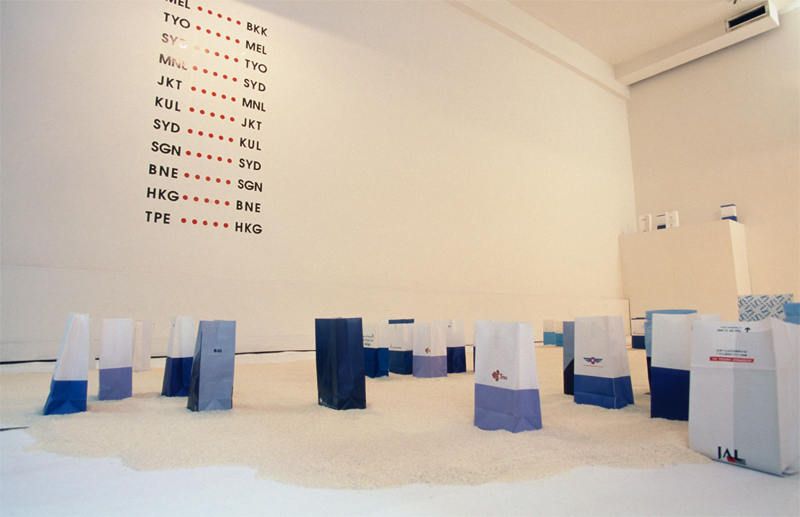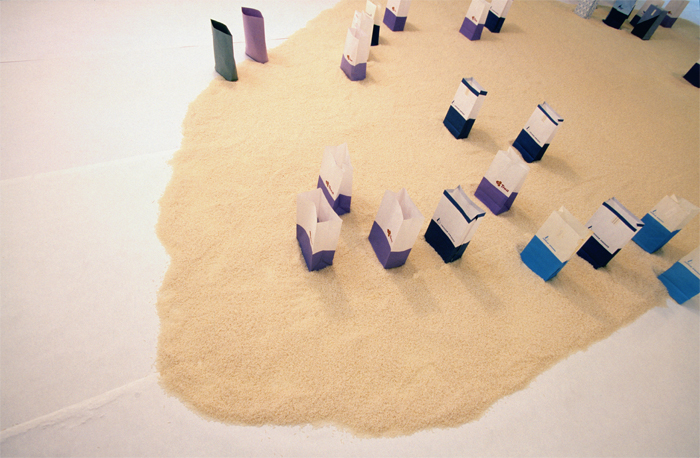Small Packages
The increasingly globalised world. Movement of people, ideas and commodities between countries and cultures become a necessity, a currency, a tourism – in constant flux. Asia as our neighbour/Asias as our neighbours.
Julie Shiels makes an installation which examines some of the complexities of these interactions
Cross pollination that can be both
Acknowledged and unacknowledged
Enriching and contaminating
Personal and societal.
Travellers take/exchange small packages of information, currency, opinions, microbes- represented here by airline sickness bags. Collected and arranged as repeating units or colour patches, they become the scaffold for the art work. These small bags make their journey repeatedly, often untouched, always as a reassuring presence to the passenger and a gentle reminder of the possibility of disease/disruption/contamination: a metaphor which extends across cultural, social, political, economic and even bacterial spheres.
The airline codes function as a system of ciphers that rely on being universally decipherable. They could be understood as a new world language, which facilitates and directs transfer. A language of global movement. Everyday. Almost everywhere.
We are initiates. Globalisation demands literacy in new languages- part alphabet/part word/part sign/ part code. Negotiations beyond the interfaces of cultures we visit or receive requires continual expansion of this literacy and understanding into a different context, even to read a street sign.
The ground of the white rice is so familiar to Australian tables that we almost taste it as we look. The Asian staple of the rice bowls, cuisines and economies: a fundamental association for us. Planted, harvested, cleaned and polished. A vehicle of trade and exchange.
So here we observe these small packages arranged on an imagined continent of rice beside the created language of airport codes. And let’s consider the promise of movement, the lure of exchange, the complexity of the emergent globalised world.
Jane Keech
Exhibited at Grey Area – 4th – 14th March 1998


